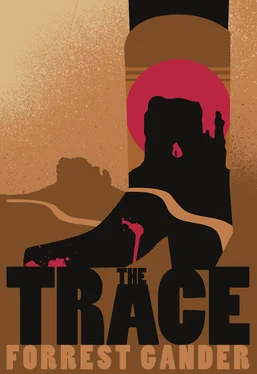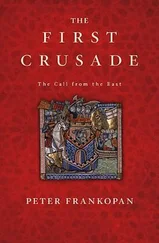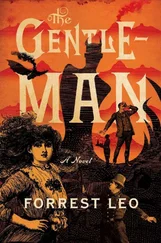Forrest Gander - The Trace
Здесь есть возможность читать онлайн «Forrest Gander - The Trace» весь текст электронной книги совершенно бесплатно (целиком полную версию без сокращений). В некоторых случаях можно слушать аудио, скачать через торрент в формате fb2 и присутствует краткое содержание. Год выпуска: 2014, Издательство: New Directions, Жанр: Современная проза, на английском языке. Описание произведения, (предисловие) а так же отзывы посетителей доступны на портале библиотеки ЛибКат.
- Название:The Trace
- Автор:
- Издательство:New Directions
- Жанр:
- Год:2014
- ISBN:нет данных
- Рейтинг книги:3 / 5. Голосов: 1
-
Избранное:Добавить в избранное
- Отзывы:
-
Ваша оценка:
- 60
- 1
- 2
- 3
- 4
- 5
The Trace: краткое содержание, описание и аннотация
Предлагаем к чтению аннотацию, описание, краткое содержание или предисловие (зависит от того, что написал сам автор книги «The Trace»). Если вы не нашли необходимую информацию о книге — напишите в комментариях, мы постараемся отыскать её.
The Trace — читать онлайн бесплатно полную книгу (весь текст) целиком
Ниже представлен текст книги, разбитый по страницам. Система сохранения места последней прочитанной страницы, позволяет с удобством читать онлайн бесплатно книгу «The Trace», без необходимости каждый раз заново искать на чём Вы остановились. Поставьте закладку, и сможете в любой момент перейти на страницу, на которой закончили чтение.
Интервал:
Закладка:
Hoa told him she didn’t want to explain her work, that he would probably get a better feel for it by seeing the process than hearing her go on. She said she was going to try to forget Dale was there, that he could leave whenever he got bored. She started to put her headphones on, then looked up at Dale — all good posture and attentiveness on the stool — and she put them back on the table.
Dale watched her wire off a thin pancake of clay from the block and slap it against the studio wall. It stuck there, and she wired off another pancake, slapped it against the wall, and did the same thing, again and again until the block of clay was gone and the concrete wall was full of clay pancakes that she peeled off and slapped on the other way around.
“Doing this, it loses its extra moisture,” she said without looking in Dale’s direction. “We make the clay out back. I like a groggy clay body.”
She plucked the pancakes from the wall and mixed and beat them together on the worktable, wire-wedging and paddling the whole thing.
“Gets the air bubbles out,” she said to the clay.
Dale was noticing the definition in the muscles of Hoa’s forearms.
She laid a canvas cloth on the table, then looked toward Dale. He seemed genuinely interested.
“I start on the table here where I can see the shape clearly,” she explained, lifting the mass of beaten clay and slamming it down, stretching the clay into an oblong platter-like shape that was heavier at one end than the other. She rotated the clay and lifted it up to her chest. In her sleeveless black T-shirt, the toned contours between her biceps and triceps sharpened. Her muscles filled with blood and her skin began to glisten with exertion. As she worked in the small studio, she was serious and intense. The studio had two doorways, but no doors, a stool for him, an L-shaped work table with a potter’s wheel, a rack of shelves full of ceramics, a scattering of tools, and that was it. Other potters were working in connected studios or in other areas of the warehouse. Dale couldn’t look away. He might be the professor and she, recently a student, but it was clear to him that she was in no way intimidated. He was only seven years older in any case. It wasn’t a big difference.
At the table, Hoa took up a couple tools and etched marks in the clay that, from where he was sitting, he couldn’t make out. She laid out the canvas cloth on the floor between the worktable and Dale’s stool, placing the clay on top. She straddled the canvas in her running shorts, bent, and lifted up the clay, thirty pounds worth. Twisting to the left and starting a rhythm in her midsection like a golfer, she swung it outward. Then, using that torque with her legs fixed in place, she swung the hunk of clay back — pure centrifugal force — her arms extended, her whole body rotating as she slammed the clay to the canvas between her legs. The clay made a sound like someone getting punched in the stomach, flattening into an oblong.
When she had lifted, turned, and slammed the clay several more times, she set it back on the worktable and asked if he wanted to see the next part close up. He was up off his stool and beside her in an instant.
The scratch marks and depressions she had made earlier with the tools had been stretched into long craters and curved bands. She used both hands to squeeze one edge of the clay upward into something that looked to Dale like a cobra head. She repeated the process on the other side.
“I want to give it more lift over here,” she said looking Dale right between the eyes. “Make it eye-sweet.” Then she put her hands under one side of the clay and it took on the quality of a wave.
Something’s eye-sweet, Dale almost said. “You plan this all out beforehand?”
Hoa told him that she couldn’t plan it. She’d recently developed this shape and she wanted to work with it for a while. But the shape was different every time she stretched it. She might make seven or eight works in an afternoon and keep only one of them. The others she would pound back into formless clay.
She showed him some of her finished pieces, and he picked one and bought his first ceramic sculpture. Two months later, he had three ceramic sculptures and a set of tableware and cups. She had a note from him that she kept with his other notes in her sketchbook.
I’m eating lunch, meeting people, planning lectures, getting a coffee, and what’s really happening is a riot inside me. A riot of you inside me. Like all spring’s flowers are thrusting up at once and the crust of the earth is crumbling and sliding away to make room for such color.
Don’t fall in love with this guy, she thought. You’re too young. That was October, just before the first time they slept together. He sent her several letters in January, during his semester break, when he and his sister were moving their mother into a nursing home in Virginia. He said he wanted his life to fly into hers.
In February, they moved in together. In April they married.
La Esmeralda, Mexico
It was the street sweeper, with his scraped, spray-painted orange trash barrel behind him on its three-wheeled cart, a crude ocotillo staff sticking up from the barrel. He was knocking at a door. The painted adobe houses along the block were well-kept for the most part. Some had white lintels above their doors and thin wooden spouts extending from their parapets. Wooden shutters were closed on unglassed windows.
The door before which the sweeper stood was bright blue. It was the only blue door on the block. After a while, it was opened from the inside by a man who stood thickly in the doorway.
“Si?”
The sweeper took off his cap and glanced with rheumy eyes into the face of the police chief.
The chief looked at the man’s right ear and then at his eyes and then at his ear again. Coming out of his right ear, like a blossom emerging from a cactus flower, was another, smaller ear. That’s a weird thing to live with, the chief thought.
The gnarly fingers of the sweeper’s hands were holding his cap at the level of his belly. His flannel sleeves swallowed the better part of his hands.
“Hay algo,” he said and stopped, as though hoping the police chief might want to finish this sentence himself.
“Si?” The police chief made an effort not to stare at the double ear.
A thin black dog with white paws appeared behind the sweeper. It lifted a leg and urinated against the front wheel of the sweeper’s cart, while he stood before the police chief gathering his words.
“Hay una cabeza o algo,” he spoke softly to the chief. “En la plaza.”
The dog trotted away.
The chief had been looking past the man into the street, its cobblestone replaced last month by concrete; he’d been listening to the roosters crowing in the mud yard on the street’s far side and wondering about the man’s deformity, but now he searched for the man’s eyes. The sweeper lowered them and studied the concrete porch step. Behind him, in the street, a beleaguered mariachi wearing headphones weaved around the trash barrel cart, jousting briefly with the broom staff.
“O algo?” the police chief asked.
The sweeper apparently didn’t have anything to add. He didn’t meet the chief’s eyes again.
The chief left him at the door and went into the bedroom to make a phone call. He picked up his holstered.40 caliber from the chair and strode into the interior garden, buckling the holster around his waist. Canaries and rose finches were chirping in cages hung from pikes in the wall. In the garden, the fountain sparkled, and the tile floor was freshly washed. The chief’s wife was talking with the maid at the door of the kitchen, but when she saw his face, she cut off the conversation and came over to where he stood. He was running his hand through his hair, massaging thick tufts at the back of his neck. She looked up at him, waiting.
Читать дальшеИнтервал:
Закладка:
Похожие книги на «The Trace»
Представляем Вашему вниманию похожие книги на «The Trace» списком для выбора. Мы отобрали схожую по названию и смыслу литературу в надежде предоставить читателям больше вариантов отыскать новые, интересные, ещё непрочитанные произведения.
Обсуждение, отзывы о книге «The Trace» и просто собственные мнения читателей. Оставьте ваши комментарии, напишите, что Вы думаете о произведении, его смысле или главных героях. Укажите что конкретно понравилось, а что нет, и почему Вы так считаете.












